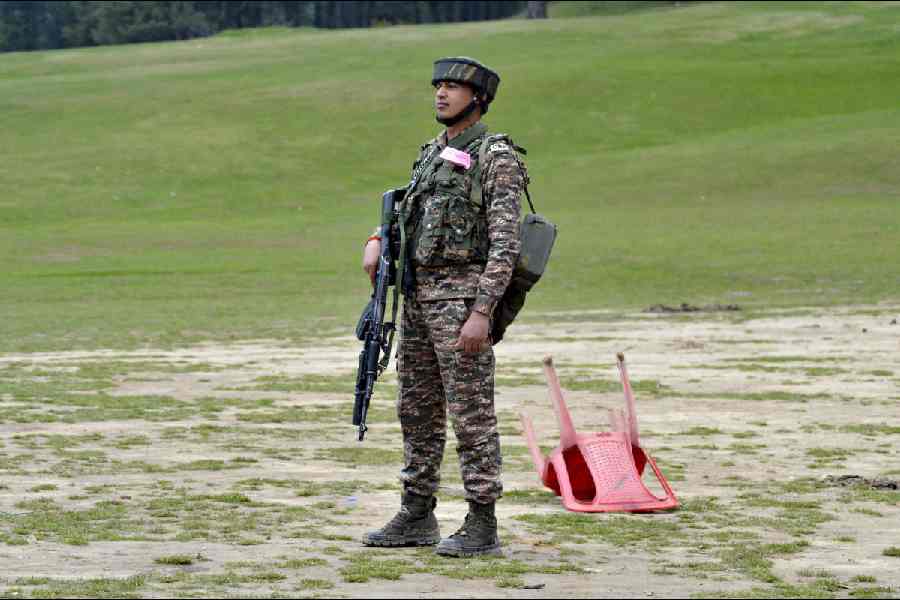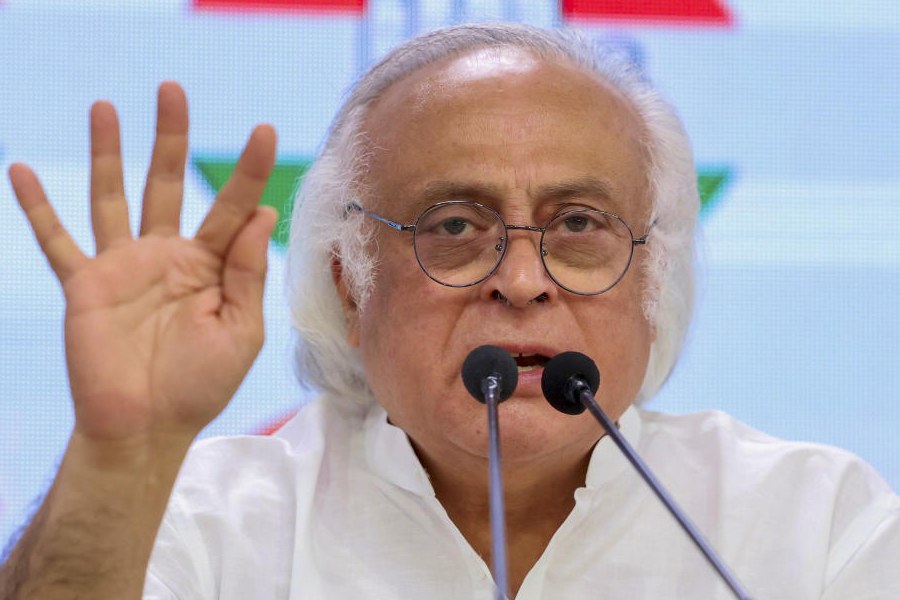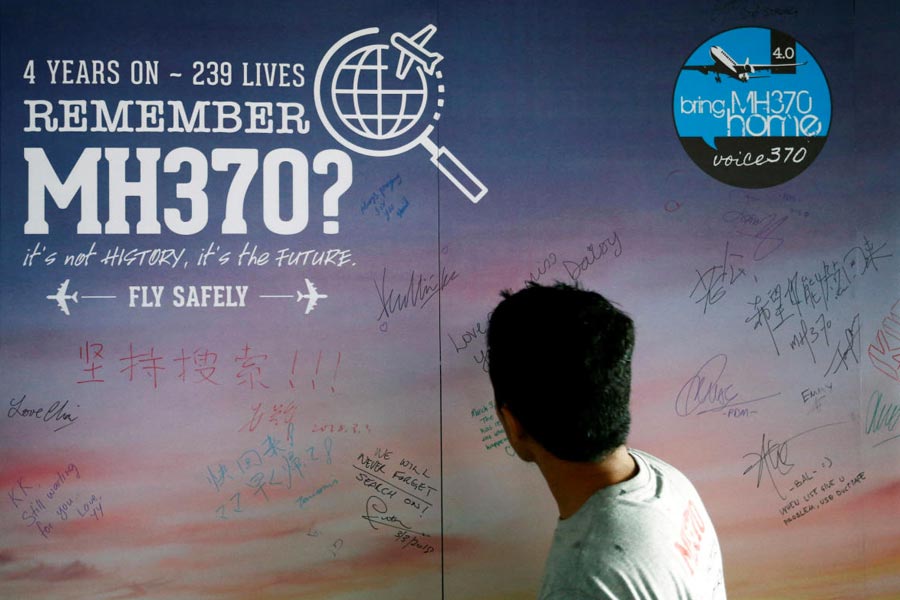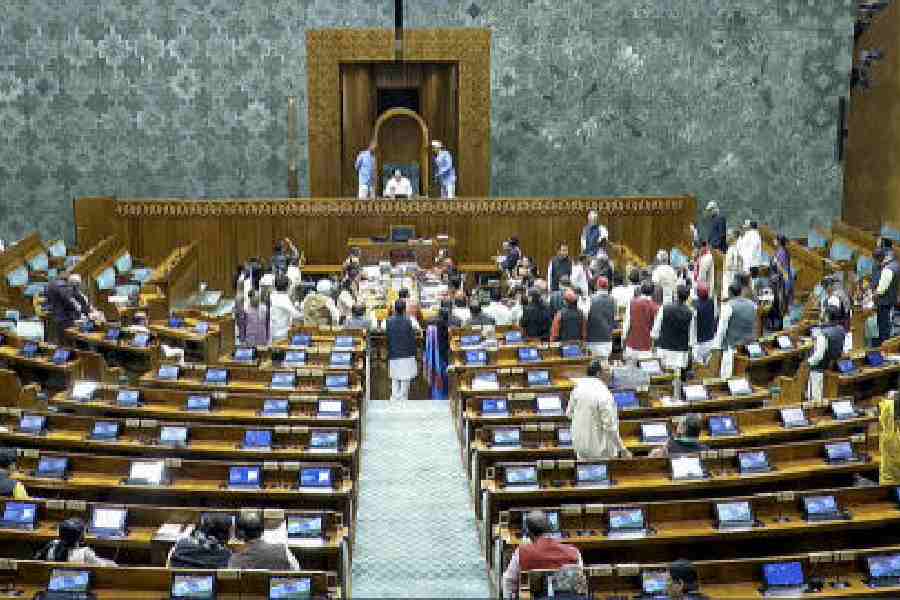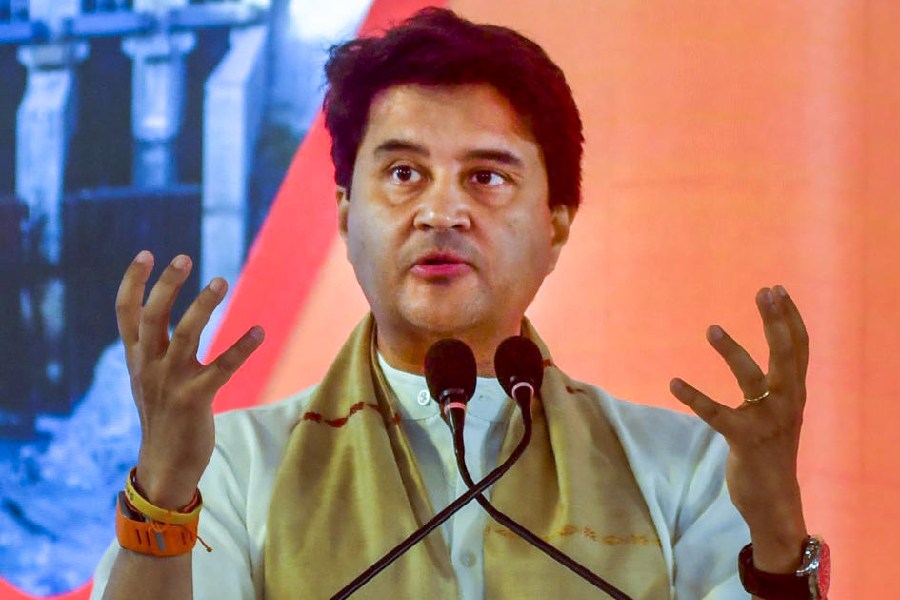The residents’ association’s WhatsApp group was alive with information about mock drills and blackouts. This was gleaned from notices sent to condominiums in distant Gurgaon so it was general rather than actionable knowledge, but the pervasive sense that the war might be coming to a neighbourhood near us made it useful as a kind of forewarning. Someone noted ruefully that modern flats in Delhi were so expansively glazed with French windows that blacking them out in the old-fashioned way with paper was nearly impossible.
Sixty years ago, it had been easier to make the small panes in the windows of our sarkari house in Pandara Park opaque. Black chart paper cut into eight-inch squares and pasted on the glass did the job. The top halves of the headlights of our fat Austin A35 were painted black. Civil defence moved quickly in government neighbourhoods; before that seventeen-day war ended, deep, diagonal trenches were dug in the garden and we rehearsed dropping into them when the sirens went.
Some things never change. Boxed newspaper comparisons of Indian and Pakistani military hardware reminded me of similar reports in The Statesman in ’65. People like me who couldn’t tell one end of a fighter plane from another till a week ago have learnt that Pakistan’s Chinese-made J-10 and India’s French-made Rafale are both 4.5 generation jet fighters and that their relative performance is of consuming interest to militaries and defence contractors across the world. The dispute about whether J-10s did in fact shoot down Rafales matters not just to Indians and Pakistanis but also to ghoulish experts in war and the business of war the world over.
As a child, I feverishly compared the relative merits of Pakistan’s F-86 Sabres and F-104 Starfighters with our Gnats, Vampires and Mystères. Now it’s F-16s and J-10s versus Rafales and Mirages but the difference is that I’m not eight years old. The mental age of desi newspapers hasn’t changed though. They are, every last one, completely on message, in lockstep with the narrative of the State.
In the bad old days, in ’65 and then in ’71, the electronic media, namely radio and television (the little of it that there was in the form of Doordarshan), were owned by the State. Journalists dreamt wistfully of a time when the airwaves might pass into private ownership and a diversity of reportage and opinion might bloom. It’s reasonable to say that the first has happened and the second hasn’t. For the last decade, with one or two exceptions, India’s news channels have functioned as the chorus of Hindu nationalism.
In times of war, such as the present, this seems to mean competitive hysteria at a level that is hard to parody. In the section of the multiverse inhabited by these channels and their autocue warriors, Karachi port has been bombed and destroyed by the Indian navy, Indian troops have crossed over into Pakistan, and Islamabad is on the verge of being captured. In the midst of this tsunami of truth-telling, the Indian government blocked The Wire for spreading ‘fake news’.
If there is a consolation, it is in knowing that toeing the government line in time of war isn’t confined to Indian newspaper editors and television anchors. In 2002, I lived in New York in the run-up to the invasion of Iraq. I had imagined that one of the bonuses of living in New York (remember this was a less online time) would be the chance to read independent, world class, daily newspapers like The New York Times and literate, free-thinking magazines like The New Yorker.
As the drums of war began to beat after the nightmare terror attack on the World Trade Center, every one of these liberal media platforms joined the chorus. The alleged presence of weapons of mass destruction, chemical and nuclear, and the ‘evidence’ for their presence were provided by star reporters like The New York Times’s Judith Miller and The New Yorker’s Jeffrey Goldberg, all of which was false, literally made up out of whole cloth. The New Yorker’s uber-liberal editor, David Remnick, endorsed the war. US journalism as a whole became such an echo-chamber of propaganda and lies that having made landfall in this storied capital of US journalism, I began reading the Financial Times, a British paper, for some relief from that fevered patriotic consensus.
After 9/11, the United States of America certainly had a casus belli and so did India after Pahalgam. The question in both cases was who would be at the receiving end of legitimate retaliation. The US laid Iraq waste because Dick Cheney, Donald Rumsfeld and George W. Bush’s neo-conservative inner circle thought of Saddam Hussein (who had nothing to do with 9/11) as unfinished business and used 9/11 as an excuse for regime change.
The murders in Pahalgam are arguably even more vile than the 26/11 terror attacks of 2008. Ajmal Kasab and his band of terrorists killed indiscriminately. The Pahalgam killers deliberately used the shahada, the Muslim’s basic creed, as a way of identifying non-Muslims before killing them. It’s hard to imagine a more wicked weaponisation of faith.
A direct link has been drawn between a speech made by Pakistan’s de facto ruler, its army chief, Asim Munir, on April 16, and the terrorist atrocity in Pahalgam. Munir, one of Zia-ul-Haq’s Islamist recruits, referred pointedly to Kashmir as Pakistan’s jugular vein and commentators like Shekhar Gupta have read the timing of both the speech and the terrorist attack as a premeditated bid to disrupt the normalisation of life, tourism and commerce in Kashmir.
In this view, India’s response was necessary to establish deterrence against the ideological terrorism sponsored by the Pakistani State. The Government of India, the country’s political Opposition and India’s security intellectuals have gone to some lengths to stress the non-escalatory nature of Indian reprisals. There can be no definitive assessment of that claim; the proof of that pudding will be in the eating.
But as drones and missiles shoot across borders, it’s worth thinking of Pahalgam as a cautionary tale. The final destination of majoritarianism is the complete dehumanisation of the Other. We see this in the communalism of the Pahalgam killings and, if these were sponsored by the Pakistani State, we see where the fusion of politics and faith finds a terminus. Partly because of the logic of its founding, Pakistan reached majoritarianism’s last station decades before we did. But over the last decade, India’s majoritarians have been making up for lost time.
The tragedy of Pahalgam isn’t just the outbreak of hostilities between India and Pakistan, it is also the hundreds of arrests in Indian Kashmir, the demolition of the property of alleged suspects, the failure to acknowledge the help offered by locals after the tragedy and the indifference to their loss of livelihood as tourism drops off and the economy slows. As Sushant Singh says in his New Yorker interview, one of the lessons of Pahalgam is that the Indian State should value Kashmir for its people, not as real estate.
Meanwhile, someone has posted a government notice for the testing of air-raid sirens in central Delhi. Delhi has been so insulated from military conflict for half a century that it’s hard to imagine enemy missiles or aircraft overhead. But reading reports and rumours of drones and
explosions in Amritsar, I look up the distance between Delhi and the border. It’s 400 kilometres as a drone
flies and considerably less than an hour. I’ll be sleeping with an ear cocked.
mukulkesavan@hotmail.com

